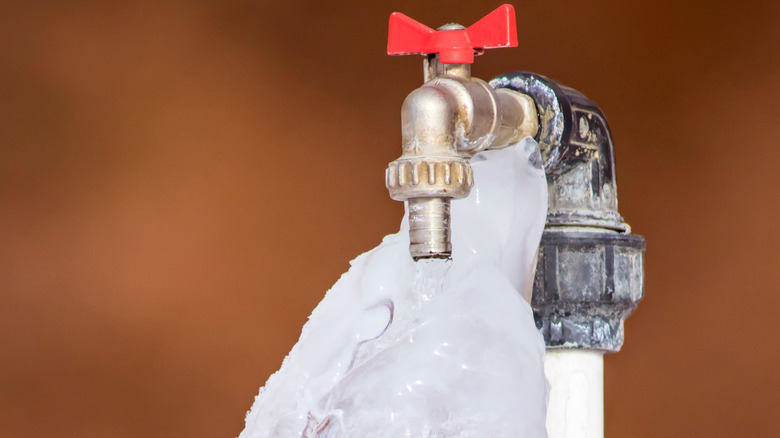Here below you'll find additional very good points all about How to prepare your home plumbing for winter weather.

Cold weather can wreak havoc on your plumbing, particularly by freezing pipes. Right here's how to stop it from happening and what to do if it does.
Intro
As temperatures drop, the threat of frozen pipelines increases, possibly leading to expensive repairs and water damages. Understanding just how to prevent frozen pipelines is essential for home owners in chilly environments.
Recognizing Frozen Pipelines
What creates pipes to ice up?
Pipelines ice up when exposed to temperatures below 32 ° F (0 ° C) for prolonged periods. As water inside the pipelines freezes, it broadens, taxing the pipeline walls and potentially causing them to rupture.
Dangers and damages
Frozen pipelines can cause water disturbances, home damages, and costly repair work. Burst pipes can flooding homes and trigger considerable structural damage.
Signs of Frozen Piping
Determining frozen pipes early can avoid them from rupturing.
How to determine frozen pipelines
Look for decreased water circulation from faucets, unusual smells or noises from pipes, and noticeable frost on exposed pipelines.
Prevention Tips
Insulating prone pipes
Wrap pipes in insulation sleeves or utilize warm tape to secure them from freezing temperature levels. Concentrate on pipelines in unheated or external locations of the home.
Home heating strategies
Keep interior spaces effectively warmed, specifically areas with plumbing. Open closet doors to permit warm air to flow around pipes under sinks.
Safeguarding Outdoor Pipes
Yard pipes and outdoor taps
Separate and drain pipes yard hose pipes before winter. Mount frost-proof spigots or cover exterior taps with insulated caps.
What to Do If Your Pipelines Freeze
Immediate actions to take
If you presume icy pipelines, maintain taps open to eliminate stress as the ice melts. Make use of a hairdryer or towels soaked in warm water to thaw pipelines gradually.
Long-Term Solutions
Structural modifications
Consider rerouting pipelines away from exterior walls or unheated locations. Add extra insulation to attic rooms, cellars, and crawl spaces.
Upgrading insulation
Purchase high-quality insulation for pipes, attic rooms, and walls. Appropriate insulation aids keep consistent temperatures and minimizes the danger of frozen pipes.
Final thought
Protecting against icy pipelines needs positive steps and quick responses. By comprehending the causes, indicators, and safety nets, property owners can secure their plumbing throughout cold weather.
5 Ways to Prevent Frozen Pipes
Drain Outdoor Faucets and Disconnect Hoses
First, close the shut-off valve that controls the flow of water in the pipe to your outdoor faucet. Then, head outside to disconnect and drain your hose and open the outdoor faucet to allow the water to completely drain out of the line. Turn off the faucet when done. Finally, head back to the shut-off valve and drain the remaining water inside the pipe into a bucket or container. Additionally, if you have a home irrigation system, you should consider hiring an expert to clear the system of water each year.
Insulate Pipes
One of the best and most cost-effective methods for preventing frozen water pipes is to wrap your pipes with insulation. This is especially important for areas in your home that aren’t exposed to heat, such as an attic. We suggest using foam sleeves, which can typically be found at your local hardware store.
Keep Heat Running at 65
Your pipes are located inside your walls, and the temperature there is much colder than the rest of the house. To prevent your pipes from freezing, The Insurance Information Institute suggests that you keep your home heated to at least 65 degrees, even when traveling. You may want to invest in smart devices that can keep an eye on the temperature in your home while you’re away.
Leave Water Dripping
Moving water — even a small trickle — can prevent ice from forming inside your pipes. When freezing temps are imminent, start a drip of water from all faucets that serve exposed pipes. Leaving a few faucets running will also help relieve pressure inside the pipes and help prevent a rupture if the water inside freezes.
Open Cupboard Doors
Warm your kitchen and bathroom pipes by opening cupboards and vanities. You should also leave your interior doors ajar to help warm air circulate evenly throughout your home.

We had been made aware of that article on How to Prevent Your Pipes From Freezing from a pal on a different web blog. Appreciated our write-up? Please quickly share it. Help others check it out. I take joy in reading our article about 6 Ways to Prevent Frozen Pipes.
Click Here